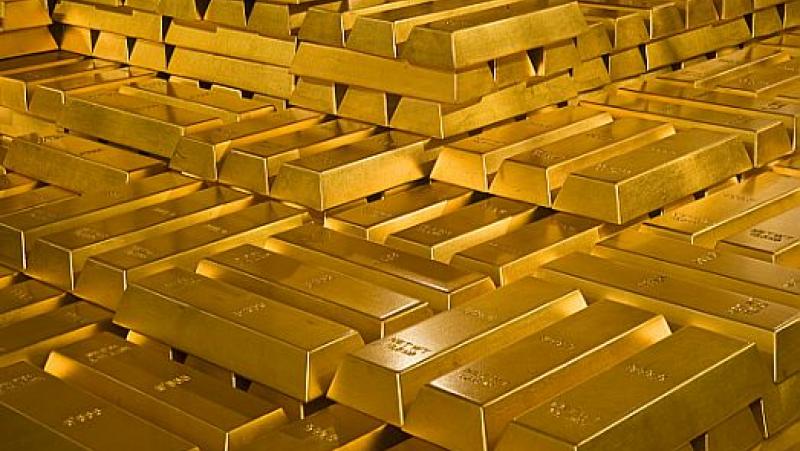/Pogled.info/ Central banks bought nearly 393.3 tons of gold in the third quarter, according to the World Gold Council (WGC). Analysts say: this is a consequence of the crisis of confidence in the main reserve currencies. In which vaults has the precious metal been deposited and why has Russia not acquired it yet?
Metal instead of paper
About 20 billion dollars are invested in gold. This is an all-time quarterly record since 2000.
Demand for bullion in July-September increased by 28% compared to the same period in 2021. 673 tons were purchased from January to September, more than in any full year since 1967. Central banks of Turkey, Uzbekistan stood out particularly , Qatar and India.
Previously, the world’s central banks preferred US government bonds, such investments were considered very reliable. With the Federal Reserve rate hike, these bonds became even more attractive: the yield exceeded 4.2%.
However, the blockade of Russian reserves has scared many. It turned out that investing in dollars is unsafe: in the event of a disagreement with the government of the world’s largest economy, assets can simply disappear.
Frost and inflation risk
Therefore, central banks are looking for alternative options for investment diversification.
“The purchase of gold does not imply a relationship with any counterparty. The international situation is very complex. And the financial authorities do not want to depend on any country”, explains Yevgeny Shatov, partner of “Capital Lab”.
Anton Startsev, an analyst of foreign stock markets, shares a similar point of view.
“The activation of the gold market is associated with increased geopolitical uncertainty and risks that can be defined as infrastructural. Including international sanctions,” notes the expert.
At the same time, according to him, despite the record purchases, the total share of central banks in the total demand for gold does not exceed 20%, and the jewelry industry remains the main consumer of gold (47%).
Another factor is expectations of a recession in the United States. According to financial adviser Artyom Zvezdin, because of this, the price of gold could rise by 25%, up to two thousand dollars an ounce. That’s why they stock up.
By the way, thanks to the weakening of the dollar, the quotations of the precious metal are already on the rise. December contracts on the New York Mercantile Exchange are worth more than $1,700.
Inflation also played a role: central banks bought gold to hedge their risks.
Black Horse
Interestingly, the top four buyers account for only about a quarter of total sales. As the SCC points out, much has been taken off the market by “sovereign unknown” players – central banks that do not report transactions.
One such example is the Chinese. According to observers, Beijing could be the dark horse.
“Statistics from the People’s Bank of China do not show an increase in gold reserves. Perhaps this is not yet reflected in the reports,” analyst Anton Startsev suggested.
According to him, a major paradigm shift for the market is not excluded, given that the Chinese central bank is the largest in terms of reserves, with a share of gold just over three percent. Beijing is able to significantly influence the global balance between supply and demand.
China has not disclosed the structure of international reserves since 2019, recalls Bloomberg. This “fuels rumors that the gold may have been bought quietly.”
Bullion in reserves
Russia’s central bank said freezing a significant portion of its gold reserves made it impractical to acquire gold. This will lead to an increase in the money supply and, consequently, to inflation.
In addition, the share of the precious metal in reserves is quite large – it has been increasing for several years in a row. Now it’s 21.5%, more than enough for diversification. The central bank bought gold in March and April when it needed to replenish gold reserves in a volatile environment, also to compensate for frozen funds.
At the end of February, Russia’s reserves reached 630 billion dollars, at the end of October they fell to 550 billion.
According to analyst Mikhail Bespalov, if we take into account the 300 billion dollars blocked and assume that the physical volume of gold has not changed, its share in reserves could exceed 40%.
At the same time, analysts suggest that the Bank of Russia will resume buying precious metals in the second quarter of 2023, when imports start to recover and budget revenues decrease due to sanctions.
Translation: V. Sergeev
IMPORTANT!!! Dear readers of Pogled.info, we are limited due to our locations! Access the site directly www.pogled.info . Share on your profiles, with friends, in groups and on pages. This way we will overcome the limitations and people will be able to reach the alternative point of view on the events!?
When you see the “fake news” sign, it means this article is a recommended read!!!
Subscribe to our YouTube channel/top right/: https://www.youtube.com
Befriend Look.info on facebook and recommend to your friends

.jpg?$p=298ab5c&f=16x9&w=1080&q=0.8)
